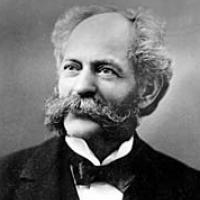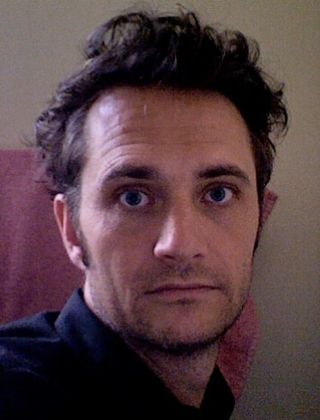Related Research Articles
Bernward Joerges is a professor of sociology (emeritus) at Technical University of Berlin and director of the Metropolitan Research Group at Wissenschaftszentrum Berlin. He holds a degree in Psychology, Dr. phil. and Dr. phil. habil. in Sociology. After early studies of development, environment, consumption and everyday life technology, his major areas of interest are social studies of science and technology, and urban and architectural studies.

Heinrich John Rickert was a German philosopher, one of the leading neo-Kantians.
Nicole C. Karafyllis is a German philosopher and biologist. As of 2010, she has been a Professor of Philosophy at the TU Braunschweig, Braunschweig/Brunswick Institute of Technology (Germany).
Biofacticity is a philosophical concept that allows to identify a living object as a so-called biofact, i.e. a semi-natural living entity which has been biotechnically interfered during its life-span such as transgenic plants or cloned organisms. In philosophy, sociology and the arts, a biofact stands in close relation to the anthropological concept of the human being a composite of nature and technology. Biofact was introduced to philosophy as a neologism in 2001 by the German philosopher Nicole C. Karafyllis and fuses the words artifact and the prefix "bio". One of Karafyllis' thesis is that a technical change in living objects, i.e. an increase in biofacticity, will shift the anthropological concept of hybridity towards a technological self-definition of the human.
The philosophy of technology is a sub-field of philosophy that studies the nature of technology and its social effects.

Alfred Schmidt was a German philosopher.

Gene banks are a type of biorepository that preserves genetic material. For plants, this is done by in vitro storage, freezing cuttings from the plant, or stocking the seeds. For animals, this is done by the freezing of sperm and eggs in zoological freezers until further need. With corals, fragments are taken and stored in water tanks under controlled conditions. Genetic material in a 'gene bank' is preserved in a variety of ways, such as freezing at -196° Celsius in liquid nitrogen, being placed in artificial ecosystems, and put in controlled nutrient mediums.

Helmuth Plessner was a German philosopher and sociologist, and a primary advocate of "philosophical anthropology".

Gustaf Kossinna was a German philologist and archaeologist who was Professor of German Archaeology at the University of Berlin.

BioArt is an art practice where artists work with biology, live tissues, bacteria, living organisms, and life processes. Using scientific processes and practices such as biology and life science practices, microscopy, and biotechnology the artworks are produced in laboratories, galleries, or artists' studios. The scope of BioArt is a range considered by some artists to be strictly limited to "living forms", while other artists include art that uses the imagery of contemporary medicine and biological research, or require that it address a controversy or blind spot posed by the very character of the life sciences.
In biology, a biofact is dead material of a once-living organism.
Günter Ropohl was a German philosopher of technology.

Johann Karl Nestler, Czech: Jan Karel Nestler was an Austrian scientist in the field of hereditary traits, professor of natural history and agriculture at the Philosophical Faculty of University of Olomouc, dean of the faculty and rector of the university, and doyen of the Czech agriculture science.
Feminist technoscience is a transdisciplinary branch of science studies which emerged from decades of feminist critique on the way gender and other identity markers are entangled in the combined fields of science and technology. The term technoscience, especially in regard to the field of feminist technoscience studies, seeks to remove the distinction between scientific research and development with applied applications of technology while assuming science is entwined with the common interests of society. As a result, science is suggested to be held to the same level of political and ethical accountability as the technologies which develop from it. Feminist technoscience studies continue to develop new theories on how politics of gender and other identity markers are interconnected to resulting processes of technical change, and power relations of the globalized, material world.
Willy Moog was a German philosopher and educator.

Caroline Y. Robertson-von Trotha is a Scottish sociologist and cultural scientist, working in Germany.

Franz Maria Feldhaus was a German engineer, historian of science, and scientific writer. He was known in the late 1950s as "Germany's most well-known and most prolific writer on the history of technology."
Ursula Klein is a German historian of science known for her cross-disciplinary work on the historical emergence of scientific and technological knowledge. She is a senior research scholar at the Max Planck Institute for the History of Science in Berlin, Germany. Her work has shown how experimentalists created specialised information technologies called "paper tools" to generate new knowledge systems. Her interpretation of such tools has been widely applied by historians, philosophers and sociologists of science and technology, and is seen as marking a foundational change in scientific reasoning and practice in the history of chemistry in the early 19th century. She holds that there is no clear dividing line between science and technology, oftentimes using the term "technoscience" to represent the historical interface between scientific reasoning and the material forms of knowledge produced within specialised industrial or medical settings. In 2016 she received the HIST Award for Outstanding Achievement in the History of Chemistry from the American Chemical Society.

Andreas Weber is a German biologist, biosemiotician, philosopher and journalist.
Andreas Greiner is a German artist, based in Berlin. He works with a wide range of different media including sculpture, installation, photography, video and techniques such as electron microscopy, algorithmic image creation and 3D printing. Frequently he works with biological and natural growth processes to create art works. His approach addresses humanity’s relationship with its living and non-living environment and the nature–culture dichotomy.
References
- 1 2 Heil, Reinhard; Kaminski, Andreas; Stippak, Marcus; Unger, Alexander (2007). Tensions and Convergences: Technological And Aesthetic Transformations of Society. New Brunswick: Transaction Publishers. p. 145. ISBN 9783899425185.
- ↑ Burkard, Michael (2018). Conflicting Philosophies and International Trade Law: Worldviews and the WTO. Cham, Switzerland: Palgrave Macmillan. p. 126. ISBN 9783319610665.
- ↑ Grunwald, Armin (2012). Responsible Nanobiotechnology: Philosophy and Ethics. Boca Raton, FL: CRC Press. p. 241. ISBN 9789814364331.
- ↑ Nicole C. Karafyllis: Biologisch, natürlich, nachhaltig. Philosophische Aspekte des Naturzugangs im 21. Jahrhundert. Tuebingen: A. Francke Publisher; chap. 6
- ↑ Nicole C. Karafyllis (Hg.), Biofakte. Versuch über den Menschen zwischen Artefakt und Lebewesen, Mentis: Paderborn 2003.
- ↑ Bruno Maria Klein: Artefakt und Biofakt, in: Mikrokosmos 1943/44
- ↑ Atkinson, Paul; Glasner, Peter; Lock, Margaret (2009). The Handbook of Genetics & Society: Mapping the New Genomic Era. Oxon: Routledge. p. 230. ISBN 978-0203927380.
- ↑ Karafyllis, N. C.: Provokation als Methode der biotechnischen Evolution, in: Volker Gerhardt, Klaus Lucas and Günter Stock (Eds.): Evolution. Theorie, Formen und Konsequenzen eines Paradigmas in Natur, Technik und Kultur. Berlin: Akademie Verlag 2011
- ↑ Marianne Schark: Lebewesen versus Dinge, De Gruyter 2005.
- ↑ Jürgen Habermas: Die Zukunft der menschlichen Natur, Frankfurt am Main: Suhrkamp 2001.
- ↑ Cf. Bruno Latour: Politics of Natur. How to bring the Sciences into Democracy, Harvard University Press 2004.
- ↑ Boldt, Joachim (2015). Synthetic Biology: Metaphors, Worldviews, Ethics, and Law. Wiesbaden: Springer. p. 114. ISBN 9783658109875.